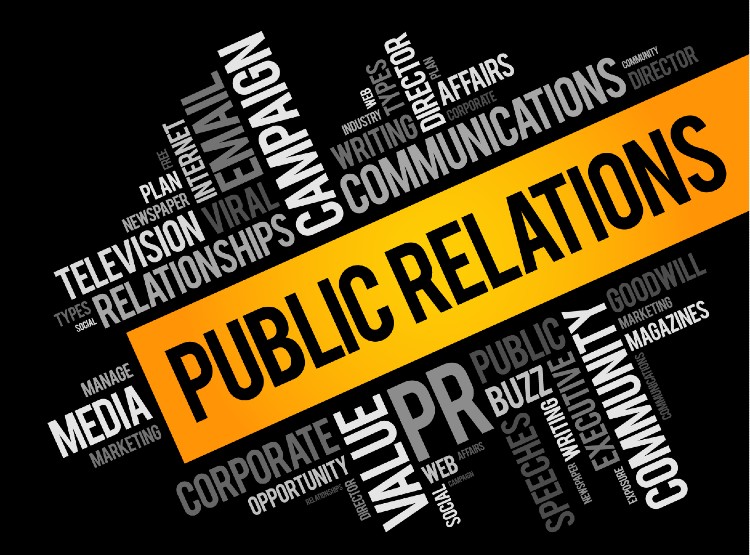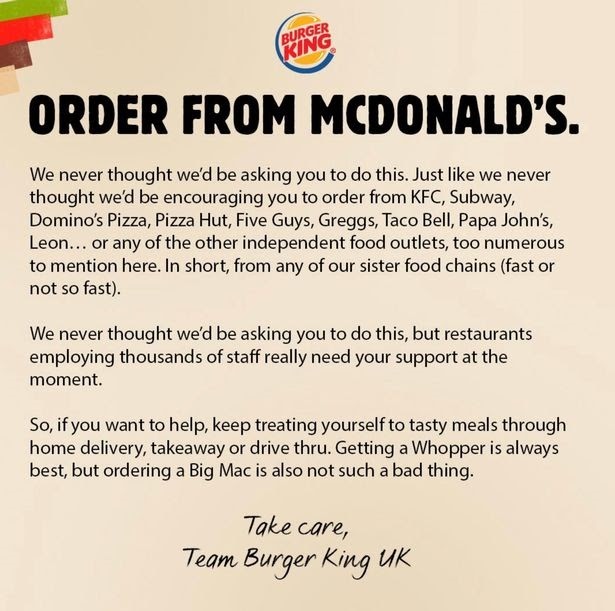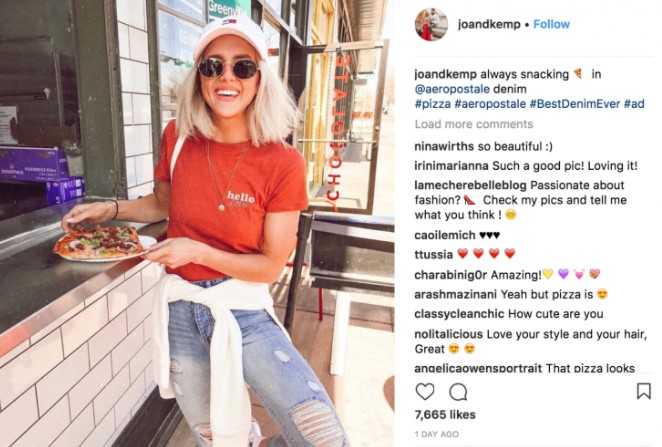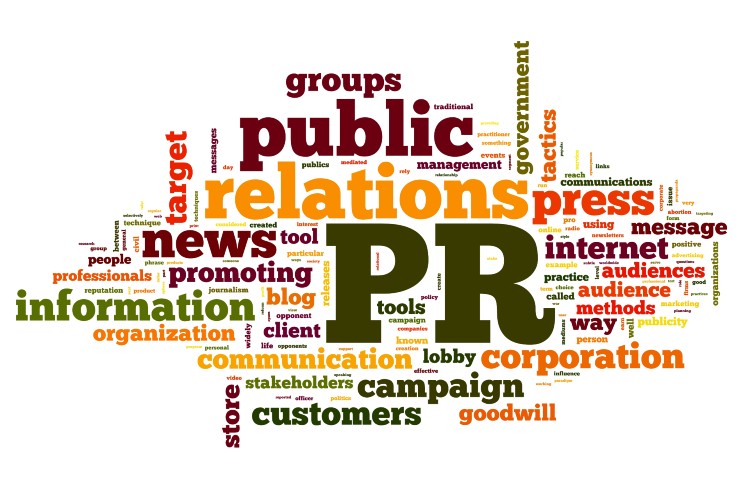Writers are just like Parmesan cheese; they go with everything. Do you need a PR strategist to improve your brand image? Hire a creative content writer. Need an influencer to spread the word about your new brand? Hire a writer with an incredible social media following.
What’s more, you could even get a 3-in-1 package: a writer, a PR strategist, and an influencer, all in one person.
As a content writer trying to navigate the world of public relations and influencer marketing, you’ll need more than just your writing skills to draw in conversions. In this guide, we’ll discuss how to effectively combine these three fields to achieve effective results.
What Does Public Relations Entail?

“If a young man tells his date how handsome, smart and successful he is – that’s advertising. If a young man tells his date she’s intelligent, looks lovely, and is a great conversationalist, he’s saying the right things to the right person, and that’s marketing. If someone else tells the young woman how handsome, smart and successful her date is – that’s PR.” – S.H Simmons.
Simply put, public relations is the art of combining all of a brand’s positive attributes to create a narrative that puts the brand in a good light and supports its goals. Usually, the media is then used to broadcast this narrative to the brand’s target audience.
For instance, if you own a beauty brand, you’ll want to combine all of the brand’s selling points: inclusivity, effectiveness, etc., to portray a positive media image to your target audience – much like what Rihanna did with Fenty.
When you create this narrative and get the media to talk about the brand, this is known as winning earned media. It can help you achieve your primary goal, which could be driving more sales, increasing conversions, or bringing more traffic to your website.
One of the best PR moves the world has ever seen is Carlsberg’s £20m campaign in 2019. Previously, Carlsberg, one of the world’s biggest breweries, was advertised as being “probably the best beer in the world.”
However, the management decided to reinvent the brand by admitting that its famous slogan wasn’t true and redid their recipe from scratch.
Although this was a seemingly “foolish” move, it had one precise aim: to paint the narrative that Carlsberg is a genuine brand that cares about being completely honest with its customers. They also won earned media, as several media sources such as Sky News and The Metro picked this campaign up.
Customers applauded the brand for its honest approach, and brand awareness (which was the main goal) shot up by 3% through advertising alone.
The moral lesson? If you’re trying to do PR right, create a positive narrative for your brand and run with it, no matter how ridiculous it may seem.
The Purpose of PR

It’s important to note that getting the media buzzing about a brand isn’t the end goal of public relations. Instead, it’s just a means towards achieving its aims.
But what are these aims? Well, there are quite a few:
To boost credibility
For any startup brand or business, gaining credibility is essential, especially if you want to gain clients or boost sales. Fortunately, PR helps achieve this aim by creating a positive narrative and pushing it in front of your target audience to earn their trust.
To increase awareness
Just like the Carlsberg case we discussed earlier on, PR can help to significantly increase brand awareness. By showcasing your product and creating a buzz around it, you can extend a brand’s reach and get more people to know about it.
Improved search rankings
In today’s world, PR and search engine optimization work in a team. The more media coverage a brand gets, the higher its search rankings will be. For instance, when an online magazine covers a piece about a brand, this publication will most likely include a backlink to the brand’s website. Since backlinks are a vital ranking factor, this approach will help the brand to rank high on search engines.
What Role Does Writing Play in PR?

Over the years, there have been several debates, arguments, and maybe a few fistfights about the importance of writing skills in public relations.
The truth is that writing plays a significant role in creating and implementing PR strategies. In fact, one might even say that excellent writing skills are at the forefront of an effective PR strategy.
Here’s why:
Writing is at the core of persuasion and compulsion

In 2020, with many industries crumbling and people losing their jobs due to the pandemic, Burger King pulled a surprising stunt. They issued an “Order from McDonald’s” press release, urging their customers to buy fast food from their biggest competitors.
This message was crafted cleverly with a solid empathetic and compassionate tone that had the right effect on their target audience. The end result? The campaign got endless media coverage and, of course, increased patronage for the brand.
And that is the power of writing when it comes to public relations. To create a successful PR campaign, you’ll need effective written communication skills. Whether you’re writing a keynote speech or an op-ed, your written content has to evoke the right emotions in your target audience.
Versatility
When it comes to written communication for public relations, there’s no one-size-fits-all approach. Rather, creating PR content cuts across several forms and styles. There’s a much wider variety of written content than press releases and op-eds.
Here are just a few of the many materials you may need to write as a PR professional or strategist:
- Press releases
- Social media posts
- Media pitches
- Statements
- Blog posts
- Speeches
- PowerPoint presentations
One minute you’re crafting a long-form press release, and the next, you’re writing a 140-character snippet. As such, you’ll need incredible writing skills to be able to make this switch seamlessly and effortlessly.
What Is Influencer Marketing?

In 2015, Adidas partnered with Selena Gomez to kickstart its #MyNeoShoot contest on Instagram. It encouraged fans to share their own entries using the hashtag #MyNeoShoot. But that’s not all. The brand also used top influencers to generate a buzz around the contest, and before anyone knew what was happening, the hashtag received more than 71,000 mentions and 12,000 entries. Their following also grew by 41,000 new followers, and within that same period, their biggest competitor – Nike – witnessed a 9.1% drop in sales.
This campaign is the perfect example of what influencer marketing looks like.
In a nutshell, influencer marketing is a marketing model that focuses on using influential people to share a brand’s message or product with their target audience. Up to 65% of brands in today’s world now run influencer campaigns because of how effective this marketing model is.
The average consumer trusts recommendations from other consumers over paid ads when it comes to making a purchase decision.
For instance, let’s assume you need a moisturizer to take your skincare routine up a notch and you come across an ad for Moisturizer X. Not long after, you see a video of Kylie Jenner talking about how Moisturizer Y has helped her skin look hydrated and healthy despite the amount of stress she has been facing lately. Which moisturizer would you go for? Your guess is as good as ours. You’ll most likely go for Moisturizer Y because an influential figure claims to have used the product and highly recommends it.
What Makes an Influencer?
Contrary to popular opinion, an influencer isn’t just anyone with a large social media following. If that was the case, we’d have every Tom, Richard, and Nancy slapping on the influencer tag.
Granted, you’ll need a large following to become an influencer, but that’s only one out of the many defining features of influencing.
Basically, an influencer is an individual with a large, significant audience that makes purchase decisions based on his/her recommendations. Based on this definition, we can carve out a few descriptive features of an influencer:
- They have a large audience.
- Their audience listens to them and respects their opinions
- Their audience often makes purchase decisions based on their opinions.
The last feature is the most important one, as most brands that hire influencers typically want to drive more sales.
How Writers Can Make Money as Influencers

Writers can also easily dabble into influencer marketing and earn lucrative opportunities. But how do you do this?
Well, it’s easier than it sounds. For starters, you’ll need to grow a significant following on social media platforms such as Facebook, Instagram, LinkedIn, and others. Next, you’ll need to constantly write content on topics that are within your area of interest. This way, you can create and maintain visibility for your personal brand. Once you’ve achieved this aim, you’ll naturally have a few brands (usually within your niche) requesting to partner with you and get to your followers.
For many writers, dabbling into influencer marketing is a great way to earn a lucrative income while writing articles on interesting topics. However, it’s important to note that writing for influencing purposes is quite different from creating regular content, and we’ll show you how to do it in a bit.
Public Relations vs. Influencer Marketing: How these Two Concepts Converge

Public relations and influencer marketing are two different concepts. However, they both share a long list of similarities and points of convergence. These include:
Raising brand awareness through third parties
Influencer marketing involves brands hiring influencers to recommend and spread the word about their products or services. In exchange for these recommendations, the brands then compensate the influencers, either through financial rewards or other gifts, such as free product samples.
So, in essence, when it comes to influencer marketing, brands rely heavily on a third party (the influencer) to raise awareness and reach their target audience.
In just the same way, public relations executes brand awareness strategies through the help of third parties. However, in this case, third parties aren’t social media influencers but experts like editors, journalists, and publishers. People, including the target audience, will readily listen to these experts because they work with accurate facts and not mere sentiments.
Reliance on human touch
In today’s world, brands and marketers are gradually switching towards digitalization. From using tools like Google Analytics to automated social media features, technology is a handy tool in the marketing industry.
However, no tool can replace the human touch. This explains why brands still rely heavily on hiring and establishing connections with human influencers, even despite the wide range of marketing tools at their disposal.
Similarly, PR relies heavily on interpersonal connections. When it comes to winning earned media, it’s always helpful for reporters to be acquainted with their sources. For instance, having a professional relationship with an editor based on mutual respect and trust will help secure a faster approval of new brand stories.
Using written content to drive results
Influencer marketing is primarily dependent on written content to bring results. To raise brand awareness or increase conversions, influencers have to craft compelling social media posts to persuade their audience. Even in cases where they create video content, they’ll still need an impressive script to drive persuasion.
Likewise, public relations involves creating a wide variety of written content to suit different purposes. PR strategists have to write press releases, social media posts, op-eds, etc., to achieve the brand’s aim.
How to Combine Writing with PR and Influencer Marketing
As a content writer, there’s a huge chance that you’ll find yourself in a situation where you’ll need to intertwine your writing skills with PR and/or influencer marketing. Just like we stated earlier, writing for PR or influencing purposes is more than just stringing grammatically correct sentences together.
So, how do you successfully string these three fields together? Here are some tips that will help you to integrate public relations and influencer marketing into content writing:
Use storytelling

Storytelling has become an integral part of branding in today’s world, and for good reasons. Every brand has a story to share with its target audience. As such, instead of presenting boring facts to your audience to influence their purchase decisions, it’s advisable to get creative and use storytelling to achieve the desired results.
When it comes to writing for PR and influencing purposes, storytelling can help to evoke the right emotions in your target audience and drive them to take the action you want them to take.
A perfect example of storytelling done just right is Disneyland Paris’ commercial titled “The Little Duck.”
In the commercial, the audience gets to see a little duckling eventually meet his hero, Donald Duck, pushing the narrative that Disneyland is a place where dreams come true.
Define your audience

It’s important to note that not everyone qualifies as your audience when writing for PR and influencing purposes. As such, you’ll need to strategically define your audience to understand who you’re trying to reach and how to reach them.
Defining your audience is key to successful PR writing a. But how do you do this? Well, it’s simple. You’ll need to ask yourself a few questions, like:
- Who are they? : Who are the people that identify with your brand by liking or sharing your social media content and buying your products?
- What benefits are you offering? : To define your target audience, you’ll need to take a closer look at what you’re offering them and then gauge the demographic of people who’ll be interested in your benefits. For instance, if you’re offering educational toys to enhance kids’ cognitive development, your target audience will most likely be parents and school teachers.
Having a clear picture of your target audience will help you write effective PR and influencer marketing content that will resonate soundly with your audience.
Be accurate
It’s not enough to simply create a positive brand narrative and try to sell it to your target audience. You’ll need to present accurate facts to gain their trust and loyalty too.
If you’re reeling out statistics or facts to support your narrative, ensure that you’re as honest as possible, or else it will all be for naught. No one wants to identify with a dishonest brand.
Final Thoughts
Content writing, public relations, and influencer marketing are three different concepts, but who says you can’t have it all? As a content writer, you can effortlessly combine writing with PR and influencer marketing and drive impressive results.
Fortunately, we’ve outlined the best tips that will guarantee a flawless combination and integration of these three skills. We hope these tips will help.
Good luck!
About the Author
Patrice Corrie is an expert essay writer with several years of experience up her sleeves. She is fully dedicated to churning out high-quality essays, dissertations, and term papers to help struggling students. She also works as a part-time essay writer at Write My Essay. In her spare time, she also loves to knit and watch cat videos.


